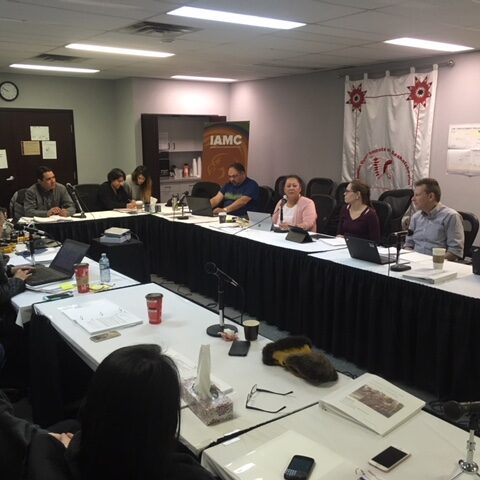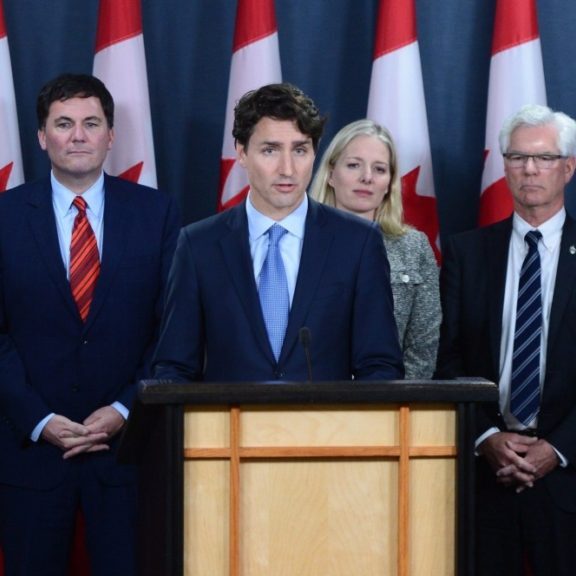Line 3
The existing Line 3 pipeline is 48 years old and is one of the six crude oil pipelines that make up the Enbridge oil mainline system.
The Line 3 project will involve the replacement of 1,067 kilometres of existing pipeline from Hardisty, Alberta, to Gretna, Manitoba, with new thicker pipeline in many sections built to modern specifications to enhance the safety and integrity of the network.
Quick Facts
The Canadian component of the Line 3 Replacement Program represents a $5.3 billion investment and is the largest project in Enbridge’s history.
Line 3 will have the capacity to carry 760,000 barrels of crude oil per day from Hardisty to the terminal in Superior, Wisconsin.
Line 3 crosses territory of Treaty 1, 2, 4, 6, and 7 and the traditional territory of many Nations that did not sign treaties. Over 90% of the project is being built on what is today private land.
The proponent has committed more than $27 million in engagement agreements for Indigenous groups. These agreements include training, traditional knowledge and land use studies, and committed contracts.
Learn more about the project directly from:
CER Hearings and Conditions
On November 5, 2014, Enbridge Pipelines Inc. submitted an application for the Line 3 Replacement Program to the Canada Energy Regulator (CER; formerly National Energy Board or NEB).
The CER heard evidence from hearing participants about the benefits associated with the Project, and received submissions in support of the Project from a variety of stakeholders and Aboriginal groups. A number of concerns with and objections to the Project were also raised by hearing participants. After considering and weighing all of the evidence before it, the NEB concluded that Project is in the overall Canadian public interest.
The CER has imposed 89 conditions on this project that strengthen public safety, protection of the environment, and ensure continued consultation between the company, landowners and Aboriginal peoples.
Conditions are legal requirements that a company must meet to be allowed to construct and operate a project. Conditions are project-specific and are designed to protect the public and the environment by reducing possible risks identified during the hearing.
The Line 3 Replacement Program has two sets of conditions. The first set applies to the Certificate of Public Convenience and Necessity that was issued under section 52 of the NEB Act. These conditions are in the Recommendation Report: Detailed assessment, on page 232 of 274.
The second set of conditions applies to the Order issued under section 58 of the NEB Act. These conditions are also in the Recommendation Report: Detailed assessment, on page 246 of 274.
The conditions for the Line 3 Replacement Program can be found here:
- Section 52 Certificate Conditions – (page 232 of 274)
- Section 58 Order Conditions – (page 246 of 274)

Crown Consultations with Indigenous Groups
Government officials consulted with 109 potentially affected Indigenous groups, including face-to-face meetings with 36 groups.
The objective of the consultations was to discuss the extent to which the NEB’s recommended conditions for the project respond to concerns from Indigenous groups and to identify any outstanding issues and potential accommodation measures to mitigate impacts on their rights.
The Government allocated more than $160,000 in participant funding, in addition to the almost $1 million provided as part of the NEB review process.
The outcomes of the Crown consultations are publicly available in the Crown Consultation and Accommodation Report.
Approval
The Government of Canada approved Enbridge’s Line 3 Replacement Project on November 29, 2016, subject to 37 binding conditions that are being enforced by the National Energy Board before construction begins, during construction, and during operation.
To respond to what it heard during these consultations, the Government provided up to $21.6 million over 5 years for the Line 3 Indigenous Advisory and Monitoring Committee. The Government also announced that it would establish an Economic Pathways Partnership, which makes it easier for Indigenous groups to access existing federal programs that helps them participate in and benefit economically from this project.



